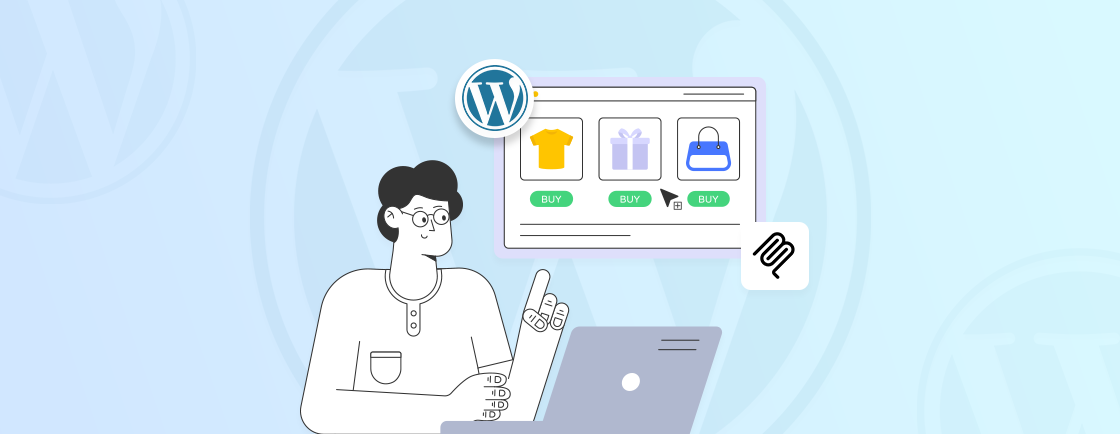Table of Contents
When we talk about comprehensive, all-inclusive platforms, one of the first names that come to mind is HubSpot. With it, you can take care of marketing, automation, CRM, and more, including content management.
But as your content needs grow, you will need deeper customization, advanced SEO control, or cost efficiency. That’s when WordPress emerges as the stronger choice, with its open-source flexibility, vast plugin library, and superior scalability. So you may look for HubSpot to WordPress migration.
In this blog, I’ll explain how the WordPress experts migrate from HubSpot to WordPress, ensuring a smooth transition. Let’s begin.
Why Migrate From HubSpot to WordPress?
HubSpot is a powerful all-in-one marketing platform, but WordPress offers unmatched flexibility, control, and scalability. That makes it a better long-term solution for many businesses. Here’s why you may make the switch:
- Cost Efficiency: HubSpot’s pricing can be prohibitive as your business grows. But WordPress is open-source with lower long-term costs.
- Greater Customization: WordPress allows deep customization with themes, plugins, and code-level changes, unlike HubSpot’s templated approach.
- SEO Control: WordPress provides superior SEO tools (like Yoast or Rank Math) and full ownership of your site’s optimization.
- Scalability: As traffic and content grow, WordPress handles high volumes better with the right hosting, while HubSpot has limitations.
- Ownership & Portability: With WordPress, you own your data and can move hosts freely—HubSpot locks you into its ecosystem.
So, does your business need more flexibility and advanced functionality with respect to content management and web development? Then WordPress would be good.
Prerequisites for HubSpot to WordPress Migration
Before migrating the site from HubSpot to WordPress, there are a few prerequisites to cover. They are key to ensuring a smooth transition.
Backup of HubSpot Data
Never start a migration without a complete backup of your existing site and data. Export your website pages, blog posts, contacts, forms, and any CRM data to avoid irreversible loss. HubSpot provides built-in export tools, but third-party plugins might be better.
Store backups securely (via cloud storage or local files) before initiating the migration. That ensures a safety net if anything goes wrong during the transfer.
A Self-Hosted WordPress Site
Before migrating from HubSpot to WordPress, you’ll need a self-hosted WordPress.org site—not WordPress.com. HubSpot involves a closed environment. But a self-hosted WordPress setup gives you full control over themes, plugins, and hosting.
So choose a reliable WordPress hosting provider and install WordPress to start a smooth transition.
Install Key WordPress Plugins
You may already know of the key functionalities that will require WordPress plugins on your new site. Based on that, you can install plugins to replicate the basic functionalities. Like SEO, contact forms, eCommerce, security, performance, email marketing, etc.
When choosing the best plugin, consider the reviews, ratings, installation, version compatibility, and more.
Proper preparation minimizes downtime and ensures a seamless switch. Our WordPress development company analyzes the existing website and then creates a proper prerequisites plan. The aim is to ensure no part of the further process is interrupted.
How to Migrate From HubSpot to WordPress?
Before starting the migration process, we assume that you have set up a WordPress website. That means everything from choosing the host and installing WordPress to setting up the design and installing plugins. After taking care of this, you can start the migration process in true sense. Let’s begin.
Assess the HubSpot Content for Migration
Before migrating, evaluate which content (blogs, pages, forms, etc.) needs to be moved. This prevents unnecessary data transfer and ensures only high-value assets are migrated. That means a cleaner, better organized website.
What to Do?
- Audit existing HubSpot content (pages, blog posts, landing pages).
- Identify outdated or low-performing content to exclude.
- Categorize content by type (text, media, forms) for easier migration.
Export Content From HubSpot
After you have narrowed down the crucial content to be migrated, it’s time to export it out of HubSpot. It’s pretty straightforward when done right. With HubSpot, you get options to export the posts and pages in bulk. Can’t say the same for media files.

What to Do?
- Log into your HubSpot dashboard.
- Go to ‘Content’ > ‘Blog’. That will list all posts and pages on your website.

- On top of the screen, click the ‘Actions’ dropdown and select ‘Export all pages and blog posts’.

- Then, you’ll see a pop-up asking you to select the file format. Select ‘CSV’.
This will prompt HubSpot to send you a CSV file containing the blogs and pages, ready to be downloaded and exported.
As for the media file, you’ll have to download them manually, individually.
Import Content to WordPress
Once exported, content must be formatted and imported into WordPress while maintaining structure and metadata. There’s no direct one-click transfer. You’ll have to manually reformat and import HubSpot content to match WordPress’s structure.
What to Do?
- Log into the WordPress dashboard.
- Navigate to ‘Tools’ > ‘Import’.
- Click on ‘Install Now’ under the tool named “WordPress”.
- After it’s installed, click “Run Importer”.
- Choose your CSV or XML file exported from HubSpot.
- For blog posts, map the authors. For pages, map the fields according to WordPress structure.
- Click ‘Import’.
This should import all pages and posts into your WordPress website. If there are any issues, you may need to clean up the CSV file.
You can also take care of this process manually. In that case, you will need to copy-paste the content and adjust the format individually. Take every content as a unique one, even though it’s already published on HubSpot.
Transfer Media Files
Images and videos from HubSpot must be downloaded and reuploaded to WordPress to avoid broken links.
What to Do?
- Download media files from HubSpot’s file manager.
- Upload them to WordPress Media Library.
You can also find a plugin for the same through the official plugin repository.
Update Media Links
Old HubSpot media links must point to the new WordPress URLs to prevent missing images.
What to Do?
- Install the plugin “Better Search Replace”.
- Run a database search-replace.
- Manually check posts for broken media links.
Make sure all featured and internal images are properly assigned.
Redirect URLs
Maintaining SEO rankings requires setting up 301 redirects from old HubSpot URLs to new WordPress ones.
What to Do?
- Map old HubSpot URLs to new WordPress equivalents.
- Use the Redirection plugin or edit .htaccess file for server-level redirects.
Test redirects to ensure they work correctly.
Take Care of SEO Tactics
A successful migration isn’t complete until your SEO foundation is securely transferred. Unlike a simple content move, WordPress SEO strategies ensure your hard-earned rankings survive the transition. Every meta tag, internal link, and URL structure must be meticulously preserved or recreated in WordPress.
What to Do?
- Migrate meta titles, descriptions, and alt tags exactly as they were in HubSpot.
- Update all internal links to match new WordPress URLs.
- Generate a new XML sitemap (via Google XML Sitemaps).
- Resubmit to Google Search Console for faster indexing.
- Ensure canonical URLs point to the new WordPress versions.
- Use Broken Link Checker to find and fix 404 errors.
Install a plugin like Rank Math or Yoast SEO for ease of approach. Then track rankings and traffic post-migration using Google Analytics and Search Console.
Test the Website
Your migrated site might look ready, but hidden issues could be costing you visitors and revenue. This isn’t just a quick glance – it’s a forensic audit of every element on your website. See how everything impacts user experience and search performance.
What to Do?
- Use a tool like Screaming Frog to scan for dead links (internal/external).
- Test contact forms, lead magnets, and buttons to confirm submissions work.
- Validate responsiveness via Lighthouse or BrowserStack.
- Audit speed with GTmetrix or PageSpeed Insights; optimize images/caching if needed.
- Ensure all HubSpot URL redirects (301s) point correctly using manual checks.
- Verify meta titles, descriptions, and structured data.
- Check compatibility on Chrome, Firefox, Safari, and Edge for consistent rendering.
A single broken checkout button or 404 error could turn away valuable customers. This final quality gate ensures your migration delivers business results, not just a technically moved website.
While this process is not very hard to follow, missing even a single step can be detrimental to your new WordPress website. So to ensure the best results, I recommend you opt for our WordPress migration services.
Let’s Summarize
Migrating from HubSpot to WordPress can give your business more flexibility, control, and cost efficiency. The process requires careful planning—from content transfer to SEO preservation. The long-term benefits of WordPress’s open ecosystem make it worthwhile.
This migration involves setting up a WordPress site, importing the content from HubSpot, exporting to WordPress, redirecting the URLs, and maintaining SEO. Whether you handle the migration yourself or work with a developer, the key is thorough preparation and testing.
So if you want help with the process, connect with our WordPress professionals today! Contact us now to get started.
FAQs on HubSpot to WordPress Migration
Will my SEO rankings drop after migration?
Not if done correctly. Proper 301 redirects, preserved metadata, and updated sitemaps ensure minimal SEO disruption. Use tools like Ahrefs to monitor rankings post-migration.
Can I automate the migration process?
Partially. While plugins like WP All Import help, some manual work (e.g., reformatting content, fixing media links) is usually required.
Do I need coding skills for this migration?
Basic technical knowledge helps, but most steps (e.g., imports, redirects) can be done via plugins. For advanced tweaks, consider hiring a developer.
Can I keep using HubSpot CRM after migrating?
Yes! Integrate HubSpot CRM with WordPress using the official HubSpot plugin or tools like Zapier.
Create with WordPress CMS
Build flexible and scalable websites using WordPress's powerful content management system.





